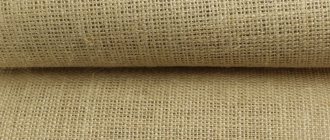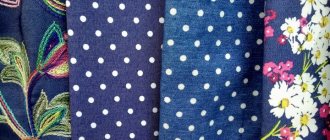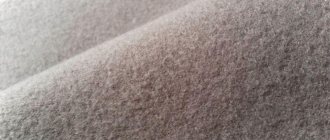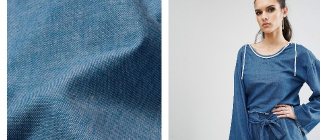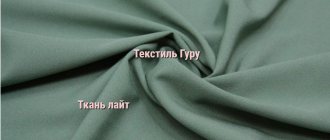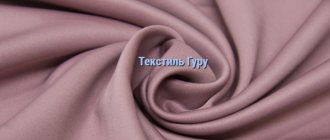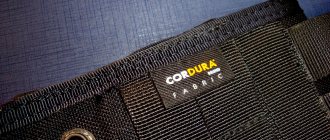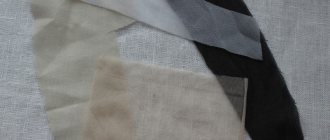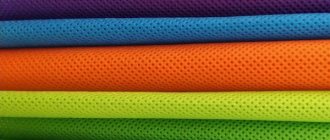Rags are second-class cheap raw materials related to cleaning materials. For this purpose, waste from textile production is used, mainly flannel, chintz, calico, cotton, and bandage scraps. The material absorbs moisture well and does not leave lint. This makes it popular for cleaning and sanding.
Properties and characteristics
There are so many varieties of rags because in fact they are not some separate type of fabric, but scraps that are left over from the production of other materials. The rags can also be used and represent the remnants of old clothes.
This is a popular cleaning material that is used for technical purposes and for cleaning. The main requirement for such residues is composition. This is cotton fabric with an admixture of synthetic substances of no more than 15%. Of course, unscrupulous manufacturers break this rule and call fabrics with additives up to 30% rags, but they absorb liquids worse. The best is considered to be the one that consists of pure cotton without additional components.
The rags are supplied from abroad, mainly from Europe. Before sending it to its destination, special workshops process it - cut off buttons and other scratched parts, disinfect them, if the flaps are large, then they are cut (for example, bed linen). Next, they are packaged in 10 kg bags, loaded onto pallets and delivered to workshops and other places where technical fabrics are needed for consumption.
The size of the rag depends on its origin. If these are new flaps, then they remain from rolls of fabric during cutting. They will not be large, on average 20x30 cm. If you need larger rags, then it is better to buy used ones; here you can find rags up to a square meter in size.
Where to buy similar products in Moscow
Cotton rags may be required for a wide variety of industries and services. Ours offers a large selection of similar products in Moscow, being a leader in the supply of technical fabrics. When choosing our products, you can rest assured of their quality and naturalness - the products offered have the highest properties, are made from high-quality materials and have excellent hygroscopic properties. The composition does not contain secondary elements (buttons, locks) that can harm the surfaces being wiped.
You can buy rags in rolls from us at the most affordable prices to provide yourself with a suitable cleaning cloth. Qualified TechTextile consultants will help you make the right choice of technical textiles, and prompt delivery to any region of Russia will allow you to use the purchase for its intended purpose in just a few days.
Types of rags
When packed in bags, all rags are sorted by type. This is necessary to ensure that each production receives the types of fabrics that they need. For example, rags are needed for processing machines dirty with fuel oil or oil. If half of the package consists of small thin pieces, they will not fit. Therefore, it is customary to classify rags into types that correspond to the characteristics of the contents.
Wiping room
It is also known under the “Standard” label. All types of used fabrics are found here, the main requirement is that the composition should contain no more than 15% synthetics. But sometimes you get more - up to 30%, this reduces the already low price. This type of rag is often ordered because it is cheaper than other types. Be prepared for the fact that you may even find denim or wool among the contents.
Linen room
The bags are packed from bed linen: sheets, pillowcases, etc. If you need large rags, this is the only type where the size can reach up to a square meter.
Waffle
Packaged from scraps of fabric used to make waffle towels. These patches have only 100% cotton composition and are used for sewing budget small towels. It is considered an elite type of rag, so it costs more than others.
Technical
These are the scraps that remain after processing a roll of fabric in sewing production. This includes different types of fabrics, including gauze, pieces of clothing or bed linen, etc. It is similar to cleaning rags, but must still comply with GOST markings. According to the requirements of this document, the material should not contain terry and pile products that could leave marks on the polished products.
These are popular types of rags, but there are also other subspecies that are less common, but some industries need them.
| Name of the rag | Compound | Size from (cm) |
| Standard | Cotton with synthetic content up to 15% | 15x40 |
| Colored cotton | 100% cotton - thin fabrics like chintz and calico | 40x40 |
| White cotton | 100% cotton – thin bleached | 40x40 |
| Linen room | 100% cotton and mixed up to 15% synthetics - from bed linen | 70x80 |
| Knitted | Scraps of new fabric or used knitwear | 15x20 |
| Terry | Old terry towels and terry cloth scraps | 15x20 |
| Gauze | Bleached or harsh gauze of different densities | 15x20 |
| Non-woven canvas stitching | Fabric stitched every 2.5 or 5 mm | Roll |
Conditions for disinfecting cleaning rags
The rags are soaked in a 3% solution of sodium bicarbonate, 6% table vinegar or in a solution of a product specially designed for disinfection measures. Despite the fact that the disinfectant solution is removed by rinsing, it cannot be ruled out that some percentage of it will still be contained in the rags. Therefore, the following requirements are imposed on it: the disinfectant must have a good wetting effect, cleansing properties and be destructive for most common pathogenic microorganisms, but at the same time not cause harm to humans and not damage the coating of furniture, floors and walls and not lead to increased corrosion of metal tools and furnishings
You may also be interested in:
- Using rags
- Instructions for processing rags
- Floor cleaning cloth
- Rules for marking rags
Application of material
Rags are effective for cleaning premises, but in fact, their range of possibilities is much wider. In production, it is often used as a consumable, which can be used to wipe away contaminants that cannot be washed off later - fuel oil, machine oil, etc.
For grinding
Soft rags are suitable for sanding surfaces. Of course, it will not eliminate unevenness or burrs in the wood, but at the last stages of sanding it is the cloth that is used. It is indispensable at the polishing stage, when it is necessary to rub the surface to a shine, and sandpaper can damage the enamel.
In production
Workshops in various fields use rags as technical consumables. You can wipe various dirty liquids with it without fear of ruining the flap - it will still be thrown away later. This is relevant in dirty areas, for example, a car service center, where it is necessary to wipe off fuel oil or oil from car parts to clean the components. To avoid doing this with work gloves or to avoid getting your work uniform dirty, use rags.
At school
This fabric is suitable according to GOST standards for use in educational institutions, as a cleaning material. It's durable and designed to last through a lot of floor or dishwashing (unlike household rags and mops, which aren't meant to be washed that often). And it's also cheap and doesn't require paint.
As a filler
To reduce the overall cost, rags are used as filler, for example, for furniture. It provides dense padding that does not compress as quickly as padding polyester.
When painting
Painting is considered one of the dirtiest jobs. This is where a rag comes in handy for wiping your hands or removing paint drips. You can also use it to wrap areas that need to remain clean.
High-quality cotton rags in rolls in Moscow
Rags are an irreplaceable material that is used for technical needs in production and at home.
This fabric is perfect for wiping hands, wiping various surfaces and cleaning rooms. With increasing absorbency and strength of the material, the scope of use of the fabric expands. You can buy rags wholesale in Moscow at. Products from a reliable supplier mean a high-quality product with optimal cleaning and absorbent characteristics. We offer our customers natural technical textiles with the highest wear resistance and hygroscopicity at the best prices.
Disposal
Disposal of rags is a responsible process, since spent material belongs to hazard class 4. In addition, used oily rags should be stored where they will not cause harm to anyone - these are tanks with a capacity of up to 200 liters. They are located in the production area under a canopy, and the floor on which the tank stands is treated with an oil-proof compound to eliminate the risk of leakage and fire.
The processing of rags is carried out by special organizations, to which the rags are delivered in bins, but some production facilities violate this regulation and either wash not particularly dirty rags or burn them themselves so as not to pay for transportation. Doing this is strictly prohibited, because the fabric belongs to the category of highly flammable materials that can lead to a fire. Therefore, the safety standard is to store the tanks away from sunlight to prevent spontaneous combustion.
Requirements
What standards should linen rags meet according to GOST?
There are no requirements for shape: the flaps can be square, rectangular, and others.
The size of the flap should be at least 300 cm2, and its narrowest zone should not be less than 10 cm in width. If you want to know what size the flaps are in a given package, you need to look at the documents or the package itself. The minimum size of the flap is always indicated, for example - 20x30. That is, in a given package, textile elements may be found in larger sizes, but not smaller ones.
The flap must be durable. Collapsed, crumbling, rotten material will not pass the standard.
During sorting, impurities and solid elements are removed from the feedstock. All buttons, zippers, fasteners and their elements are removed, and the output is only clean, soft cotton fabric without impurities. The composition should not contain foreign synthetic impurities. If the rag is knitted, then the elastic bands must be removed from it. The inclusion of the following “artifacts” is not allowed:
- rubber;
- paper;
- fittings: locks, zippers, etc.
After sorting, the rags must be disinfected and then packaged. Disinfection helps rid the fabric of bacteria and various microorganisms, which over time can lead to rot and deteriorate the strength characteristics of the material.
But what a knitted rag looks like and where it can be used can be seen here.
The rags should be dry, not wet. The permissible moisture limit is 12%.
Without fail, cleaning rags must not comply with GOST standards. However, it recommends buying material with this mark, since in this case, as already mentioned, you are purchasing higher quality products.
Purchases of goods in
The main advantage of buying technical rags is the ability to order them in any volume. In our company you can purchase: non-woven canvas fabric, technical napkins for wiping, terry, flannel rags, etc. Taking into account the low cost, practicality of use, long service life and high wear resistance, you are making an economically profitable purchase. Non-woven fabric is based on waste from cotton production, as well as all residues from the production of yarn or fabric. Similar material is sold in rolls without special packaging material. Wipes for washing various types of surfaces are made from this fabric. The quality of the production process and the raw materials used to make rags is the main principle of our work. This is what gives us confidence in the high quality of our manufactured and sold products. Our products will help you both in everyday life and in the production process at the enterprise. With us you have the opportunity to purchase a wide range of rags wholesale and retail. Our employees will fulfill your order as accurately and quickly as possible, and the prices for goods are the best in the region. Delivery is carried out both free of charge and for a fee - it depends on the batch of goods. Details can be clarified by calling the number listed on our website.
Product compliance with GOST
When placing an order, you must indicate the desired size of the rag. By placing an order with us, you receive a high-quality product that fully complies with the requirements of GOST and standards, we have documentary evidence of this. Products are manufactured in accordance with GOST 4643-75. This means that the composition and technical characteristics of the materials used to make rags comply with the standard. All acceptance rules specified in the document are observed. In addition, all necessary tests are carried out. Labeling, packaging, transportation and storage of goods are carried out in accordance with the standard.
